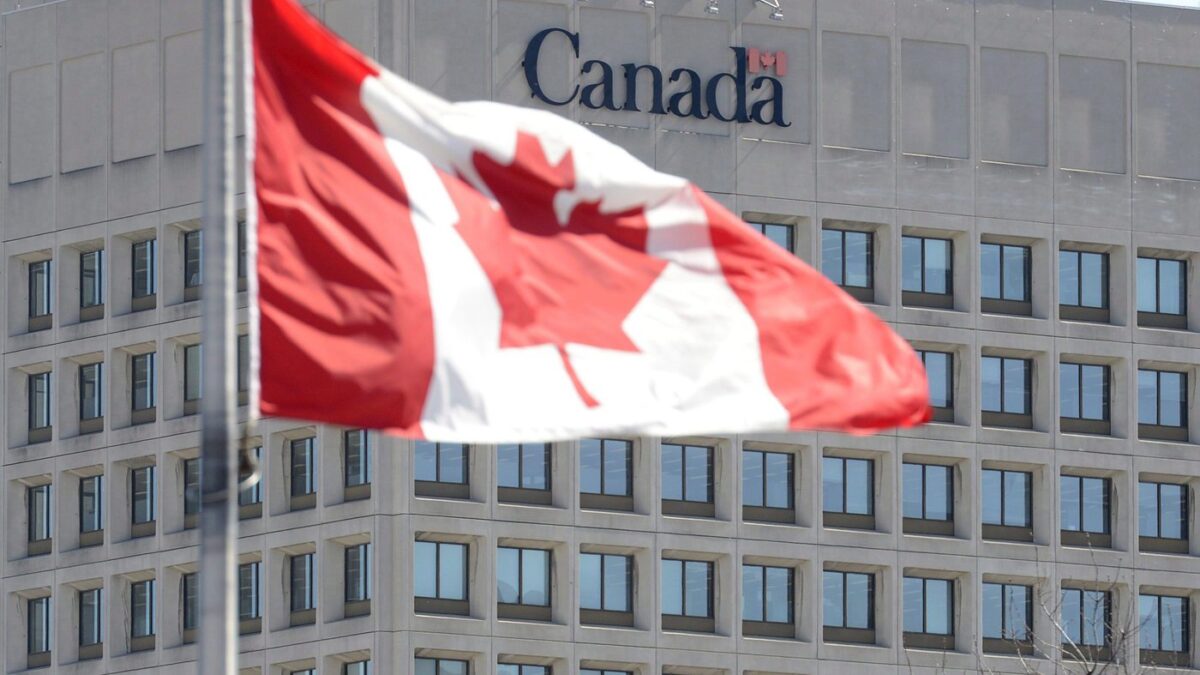


The unidentified object that was shot down over Lake Huron on Feb. 12 by the U.S. Air Force was first detected over southern Alberta, Canadian Military Major General Paul Prévost said on Feb. 13.
Prévost, the director of Strategic Joint Staff at National Defence, was providing a technical briefing alongside officials from the RCMP, Public Safety, and the Canadian Coast Guard.
Prévost clarified that the object did not originate in Alberta, but that authorities first became aware of it at that time, noting there is a gap in sensor coverage to detect these types of objects.
“They’re smaller in size, harder to find through radar, through ground radar, air surveillance radar. So we’re turning our minds to how can we address those gaps in the future,” he said.
The briefing did not shed much light on the nature of the three most recent unidentified and unauthorized objects to be shot down over North America, after a known Chinese spy balloon was taken down on Feb. 4 off the coast of South Carolina.
The three events where objects were shot down took place in Alaska on Feb. 10, in the Yukon on Feb. 11 and over Lake Huron on Feb. 12.
The objects have been described as “lighter than air” by Prévost and moving along the air currents with no evidence of propulsion mechanisms.
Some have been described as cylindrical in shape and another as octagonal.
The commander of the North American Aerospace Defense Command (NORAD), General Glen VanHerck, said on Feb. 12 he does not call the latest objects “balloons.”
“We’re calling them objects for a reason,” said VanHerck. “I am not able to categorize how they stay aloft. It could be a gaseous type of balloon inside a structure or it could be some type of a propulsion system. But clearly, they’re able to stay aloft.”
VanHerck said the Chinese balloon was assessed to be up to 200 feet tall (60 meters) and carrying the size of a jetliner in terms of equipment.
Prévost said there is no evidence linking the Chinese balloon to the other objects.
Briefing participants did not share running hypotheses on what the new objects could be, if the technology being used is known, or what is their purpose.
“We have no information on the payload they could have carried or the capabilities they have,” Prévost said.
Asked to comment on a report the object shot down over Yukon appeared to be a small metallic balloon carrying a small payload, an RCMP official said it was too early to say.
“I think it would be premature at this point to speculate as to what the device looked like, what it contained, and what some of the concerns could be until we have a chance to actually locate it and exploit some of the information that could be contained there,” said Sean McGillis, acting deputy commissioner of federal policing at the RCMP.
The RCMP is helping in the search to find the wreckages in the Yukon and on Lake Huron.
Trudeau said earlier on Feb. 13 that he was concerned about there being a pattern, an issue Prévost commented on.
“We’re obviously paying more attention to our airspace, but there’s no evidence that any of that activity appeared in the past,” he said.
He added authorities are looking back in recent history in order to see if there have been other similar contacts previously.
Trudeau also defended on Feb. 13 the fact that it was a U.S. fighter jet that shot down the object over the Yukon, noting the collaborative approach of NORAD continental defence.
“It was a very much based on the context and the situations of who was there, who had the capacity to do it before we lost the object into darkness or into situations,” Trudeau said.
The U.S. jets stationed at the U.S. Joint Base Elmendorf-Richardson in Alaska were closer to the area.
Prévost provided that the CF-188 Canadian fighter jets had been scrambled from Cold Lake, Alberta, and were minutes away when the U.S. F-22 fighter engaged the target.
On the shoot down over Lake Huron, Prévost said there was no evidence at this point that the wreckage was in Canadian waters, after VanHerck said on Feb. 12 it was likely.
Marc-André Meunier, assistant commissioner for the Canadian Coast Guard’s (CCG) central region, said his outfit is participating in the search in coordination with the RCMP and the U.S. Coast Guard.
CGG assets deployed include the ship CCGS Griffin, a drone, and two helicopters.
